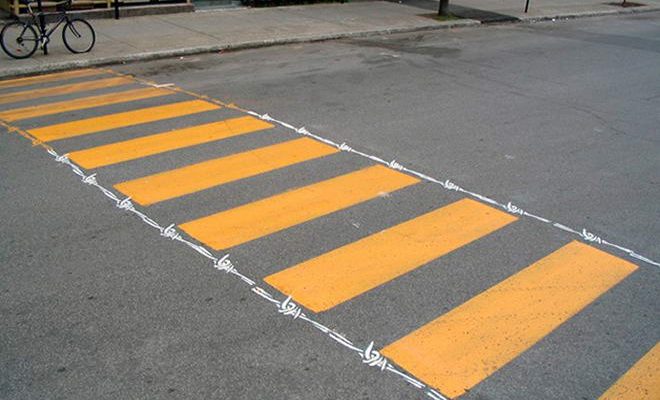The Canadian artist known as Roadsworth began painting the streets of Montreal in 2001. Firstly motivated by a desire for more bike paths in the city and a questioning of “car culture” in general, Roadworth continued to develop a language around street markings and other elements of the urban landscape using a initially stencil based technique. In the fall of 2004, Because of his creative art, Roadsworth was arrested and charged with 53 counts of mischief.
Despite the threat of heavy fines and a criminal record he received a relatively lenient sentence which he attributes in part to the public support he received subsequent to his arrest. Since that time, Roadsworth has received various commissions for his work and continues to be active in both visual art and music.
Check out 10 Most Creative Street Art Examples by Roadsworth. Don’t forget to visit his official website to see more and read his statement.
10 – Spray cans By Roadsworth
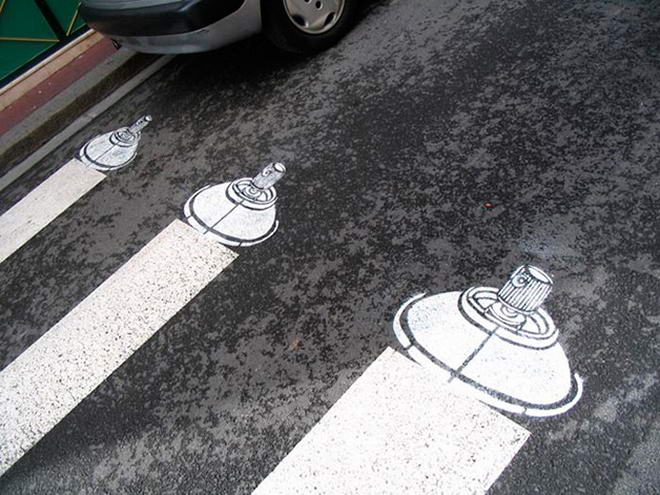
09 – By Roadsworth
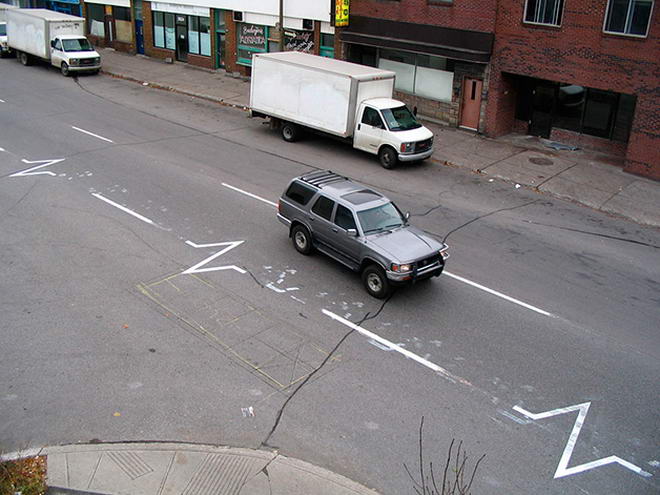
08 – By Roadsworth
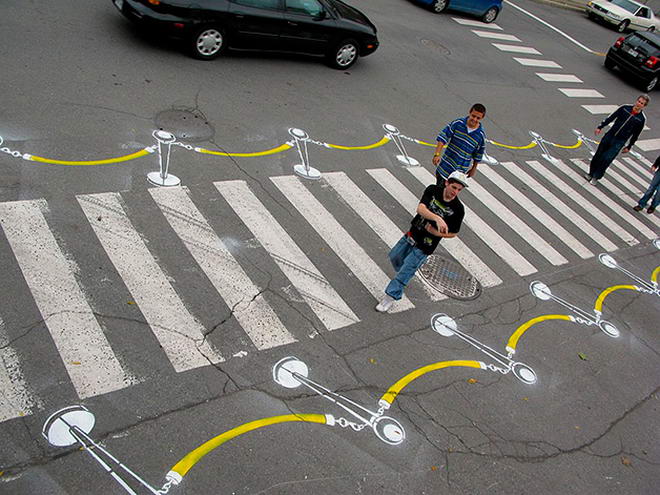
07 – By Roadsworth
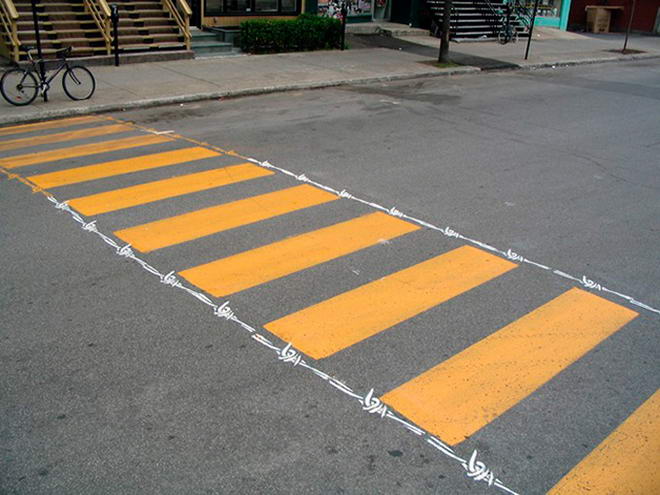
06 – By Roadsworth
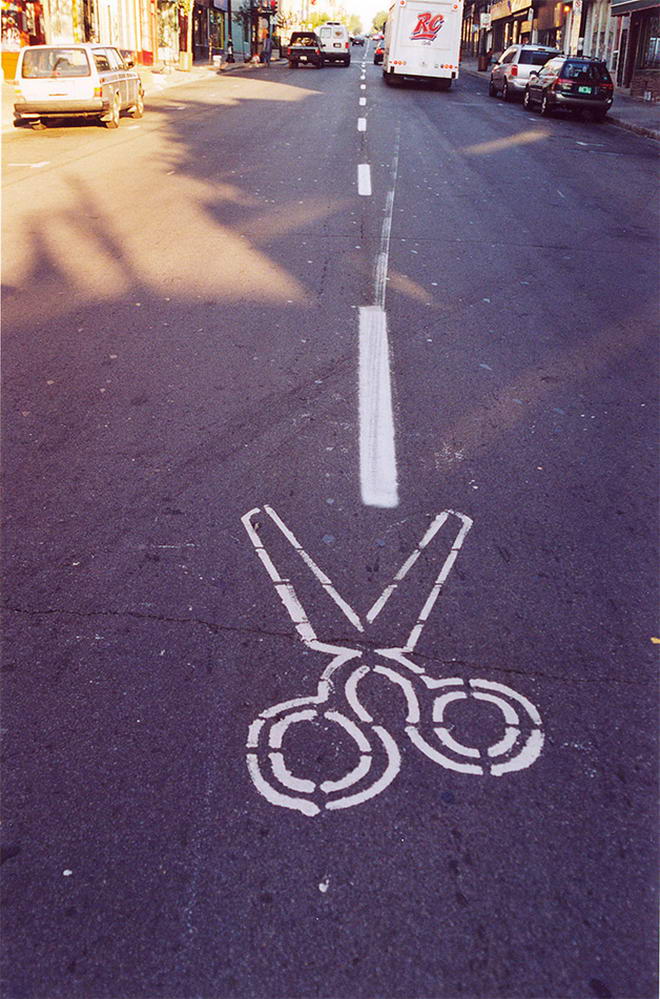
05 – By Roadsworth
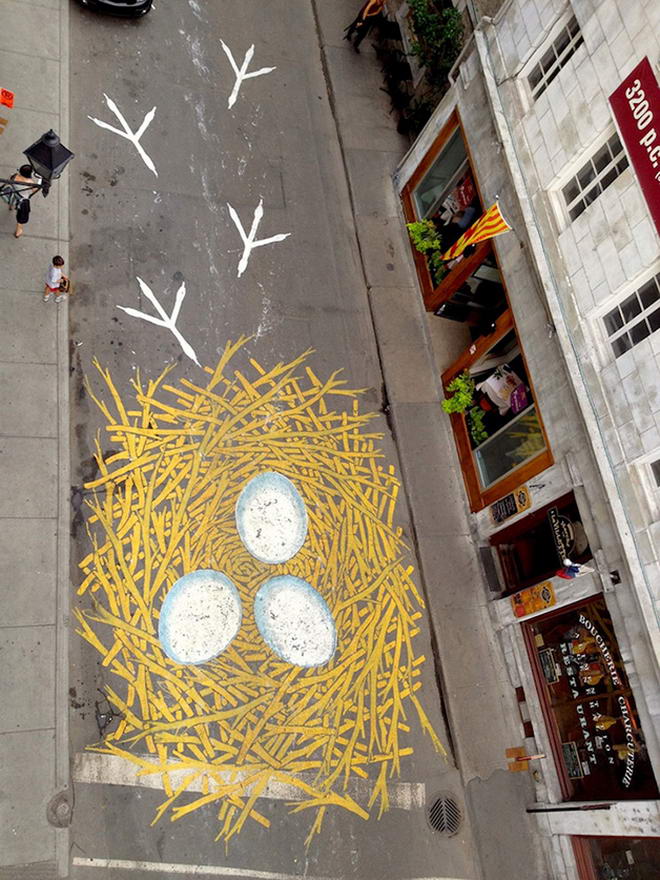
04 – By Roadsworth
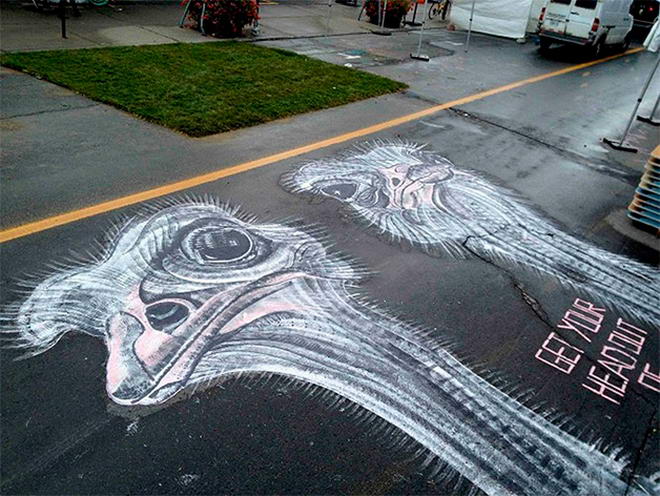
03 – By Roadsworth
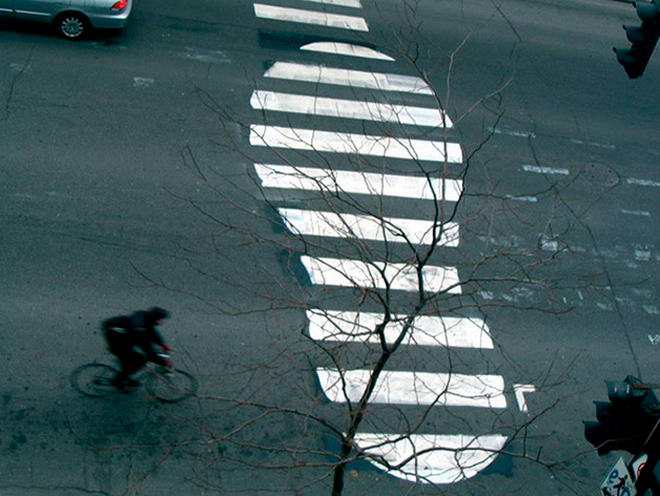
02 – By Roadsworth
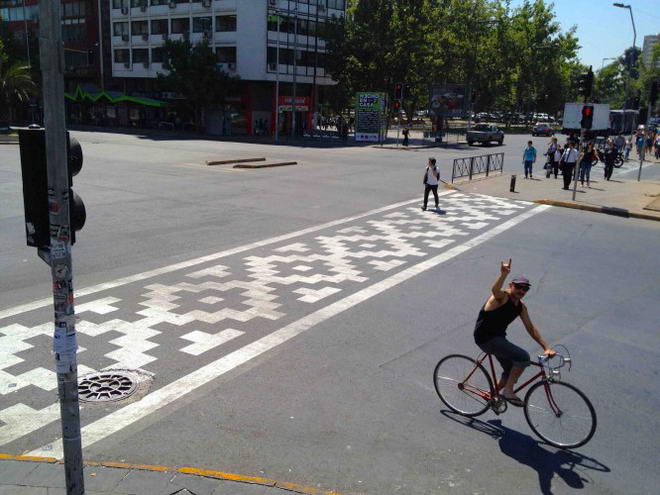
01 – By Roadsworth
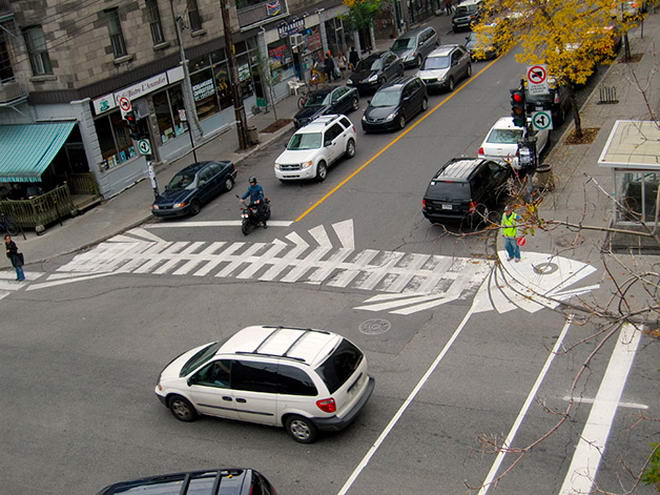
Roadsworth’s street art exemplifies these attributes, pushing boundaries and causing us to question and contemplate our surroundings. Each piece is not just a visual spectacle, but also a conversation starter, sparking discourse about societal issues and the function of public space in our daily lives. As we conclude this visual tour of street art examples by Roadsworth, we can’t help but admire the incredible power of street art and its capacity to inspire, provoke, and transform.
via: roadsworth.com
Unraveling the Impact: What Makes Street Art Stand Out?
Street art holds a significant place in contemporary culture, often leading the way in stirring up social commentary and fostering community interaction. The question arises – what is the most effective form of street art?
Many argue that murals have the most substantial impact. Large, colorful, and usually full of symbolism, murals are unmissable and thought-provoking. They have the power to tell stories, commemorate history, or voice dissent. Murals transform public spaces into open-air galleries, offering art for all, regardless of social or economic background.
However, the influence of street art isn’t confined to murals. Small-scale interventions, such as the work of Roadsworth, hold a unique power. His clever alterations of road markings, turning pedestrian crossings into giant shoelaces or parking lines into oversized zippers, are effective because they surprise and engage the viewer in a playful and unexpected manner.
Stencil art, popularized by artists like Pejac, is another potent form of street art. Its ability to be quickly applied and replicated helps in spreading powerful visual messages rapidly across various locations.
Lastly, we can’t overlook the impact of installation art, where artists incorporate physical objects into their work, creating interactive 3D pieces that encourage viewer interaction and participation.
Regardless of the form, the most effective street art shares common traits – it is accessible, thought-provoking, and encourages engagement and dialogue. It challenges our perception of public spaces, turning the mundane into the extraordinary, and invites us to see the world through a different lens.


